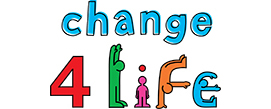Goals are good for children to have as it gives them something to concentrate and head towards.
They also help children to become focused and will help them to create a habit of having things to work towards through life. This will help them through adulthood and in later life.
Goals can come in many forms, it can be academic or sport related, or could be personal to them. Examples of goals include achieving a certain percentage on a test, competing in sports day, completing a book or helping the family out with chores at home.

How to Set Goals
Setting goals sounds simple, but to set them effectively will help to get the most successful outcome. Firstly, goals should be realistic. This will ensure that children can reach these goals, and will feel motivated to do this. As a parent or school teacher, you should always keep positive to encourage children.
If children want to write down goals, a good way to lay these out is in a table format. This will allow children to identify parts of their goals. They should also lay out a step to step guide on how they will achieve this, and an adults input will help them to do this in a clear and efficient way. A fun way to motivate through this technique is by adding stickers, for every time the individual completes a task they receive a sticker on the table.
.jpg)
Achieving Goals
There are many ways that you and others can encourage, motivate and help children to reach their goals. Firstly, support your child to make them want to achieve their goal more, and this will help them to be determined and motivated.
Once children have achieved their goals, it is important to reward them or praise them for their efforts. However, children should also be reminded that how they’re feeling should be a reward, they should feel proud of themselves and they should acknowledge what they got out of achieving it. For example, if they have achieved reading a book or completing a task, they should recognise what they have learnt and now they are more capable of doing related tasks.




